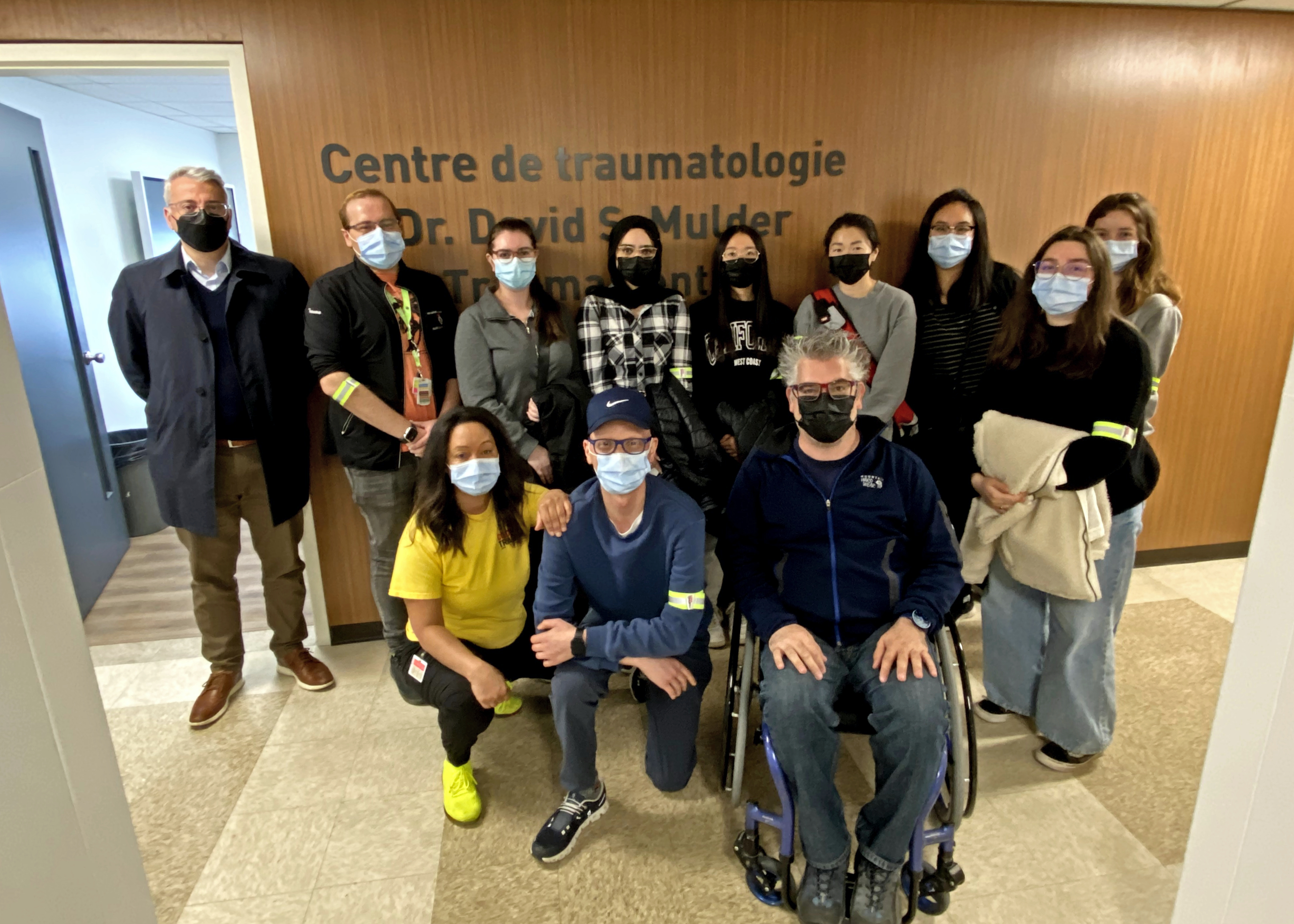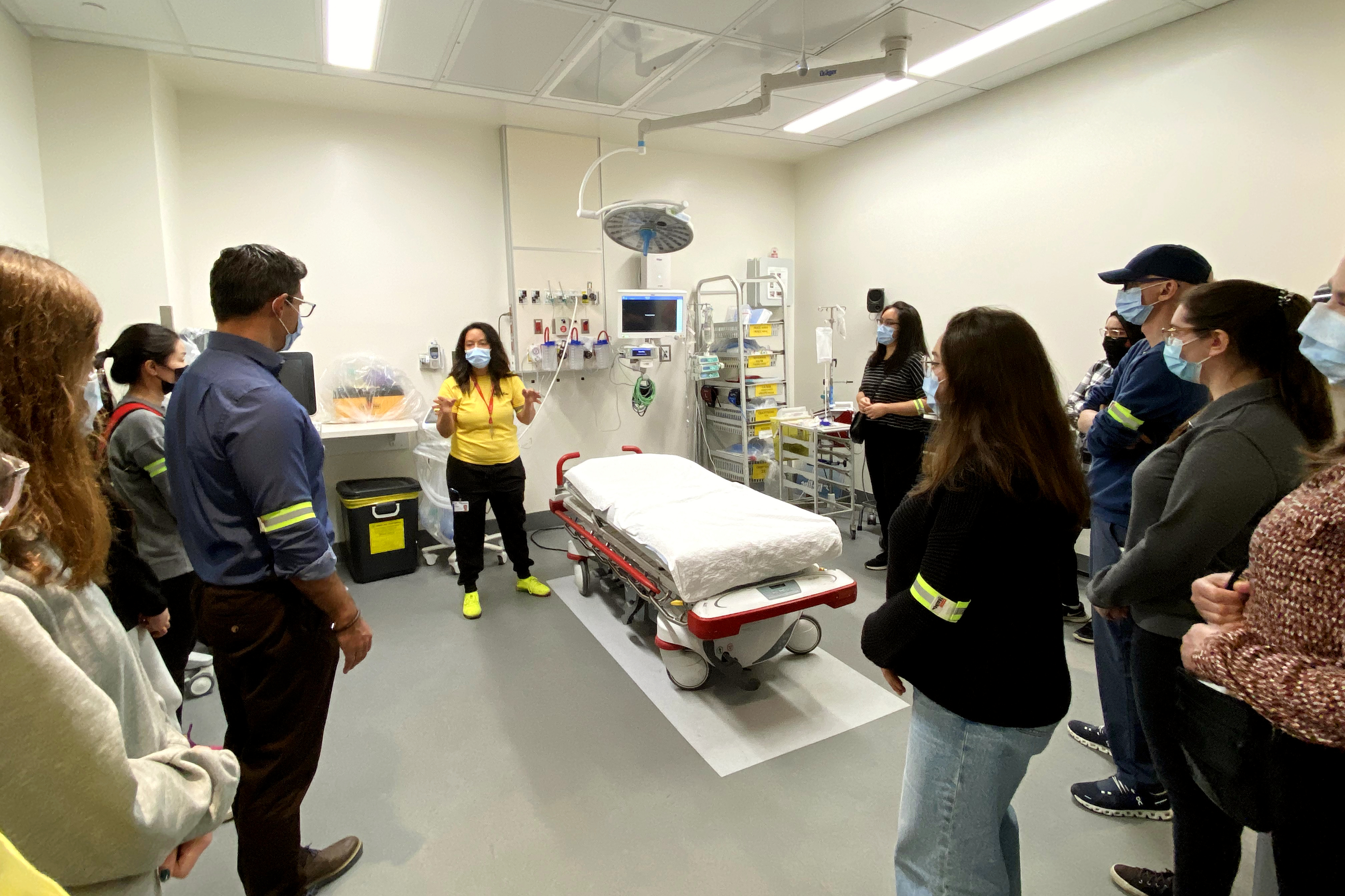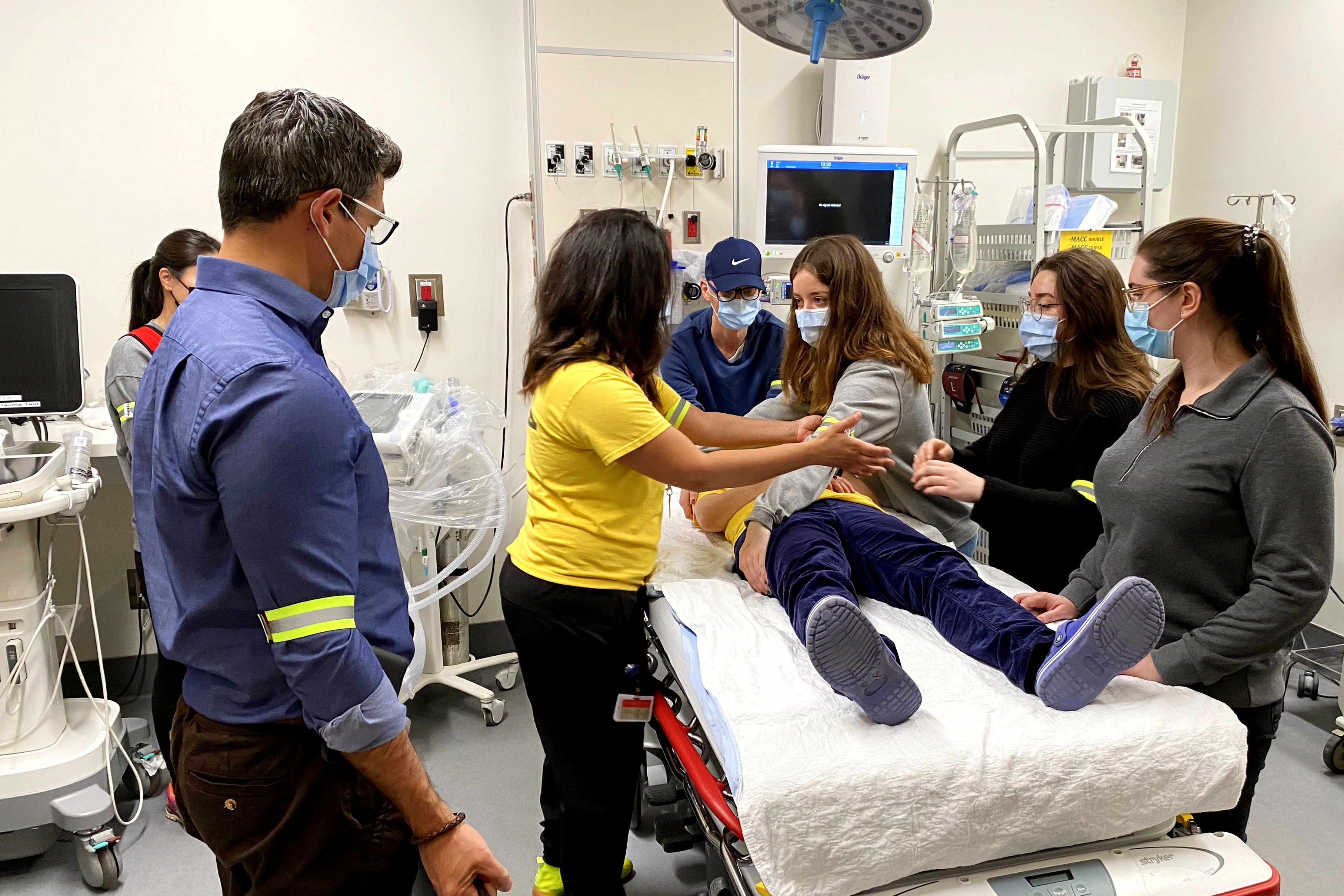Montrealers tour the MGH Trauma Centre and learn the reality of trauma care
Last week, Montrealers were invited to tour the Montreal General Hospital’s Trauma Centre as part of the province-wide event 24 heures de science. The leader of the tour, Tara Grenier, an injury prevention professional from the MGH Trauma Program’s CODE TRAUMA sponsored by CODE LiFE: The Montreal General Hospital Foundation, brought the group to a conference room for a presentation. The room offered a spectacular panoramic view of downtown Montreal, but all eyes were on Tara as she captivated everyone’s attention with important information about traumatic injuries and prevention.
Before heading out for the tour, the group introduced themselves one by one, sharing why they attended: “My daughter is interested in getting into med school,” said one participant. “I came here with her today so that we can both have an exposure to traumatology.”
“I’m excited to see how a medical team comes together to save someone’s life,” said another.
“I work in the Blood Bank at the Glen and MGH, and am interested to see the other side of trauma. I came to see how patients come in and how they’re assessed, particularly when it comes to actively bleeding patients.”
“I want to be more familiar with the treatment process so that I can understand how it can be applied to Jehovah's Witness patients.”
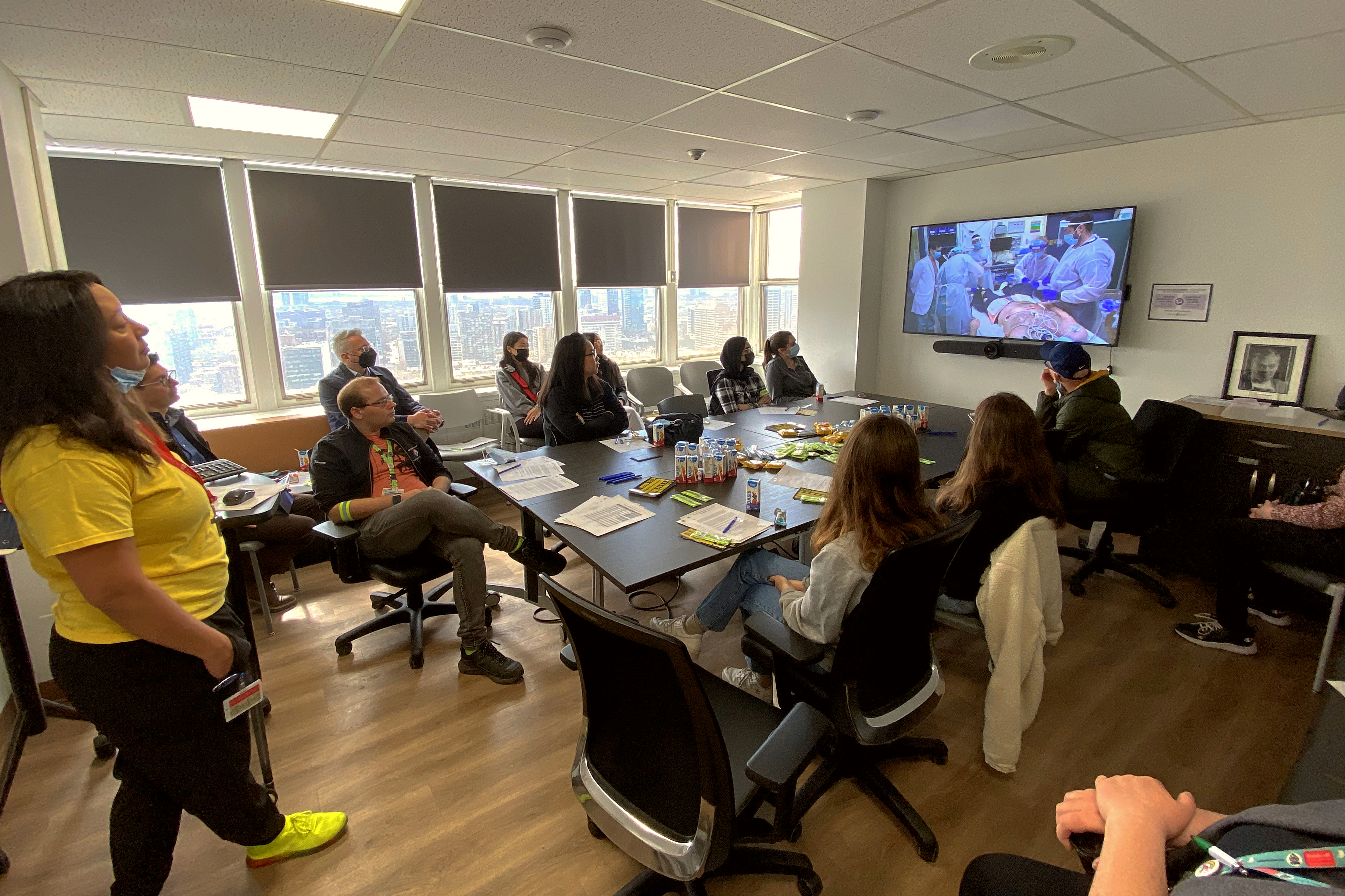
Then came time for the final member of the group to introduce himself. He addressed the room with softspoken confidence and shared the important reason why he was there: he incurred a serious traumatic brain injury in 2020 and was treated at the MGH. In his own words, he made a miraculous recovery. “I want to discover the trajectory that I went through—I don’t remember much of it. This is part of my healing process, a way for me to know that I am lucky.”
He showed everyone the scar that testified to his survivorship. A sense of comradery was established within the group, who finally proceeded out for the tour.
Hands-on experience
The hallways were calm, but Tara painted a picture of the fast-paced teamwork that occurs when a patient first arrives in the emergency department. The group stepped into a treatment room, spacious and brightly lit, stationing themselves on the periphery of the bed. Tara called for volunteers. She showed the group how many people rally around the patient in order to save their life.
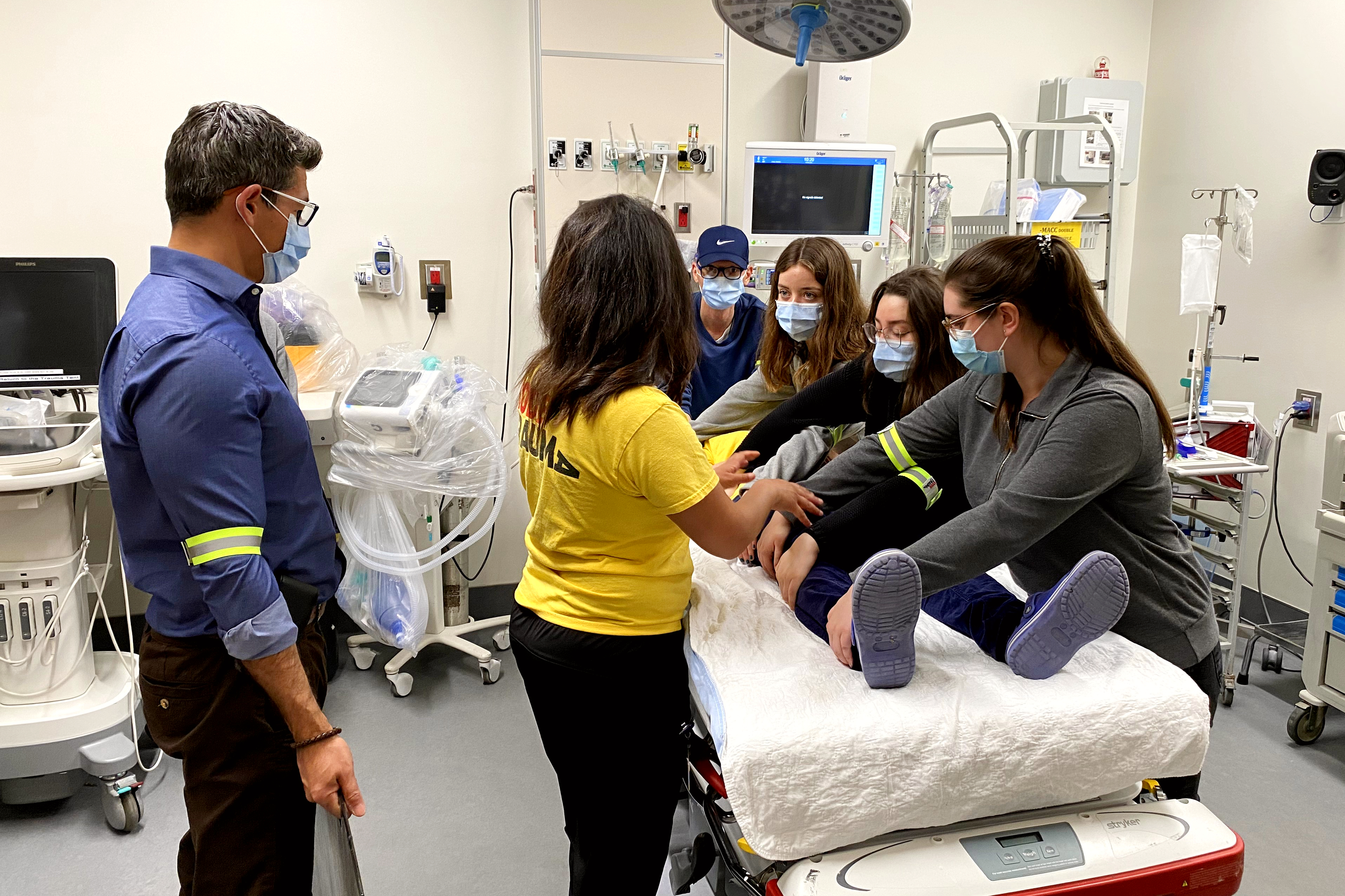
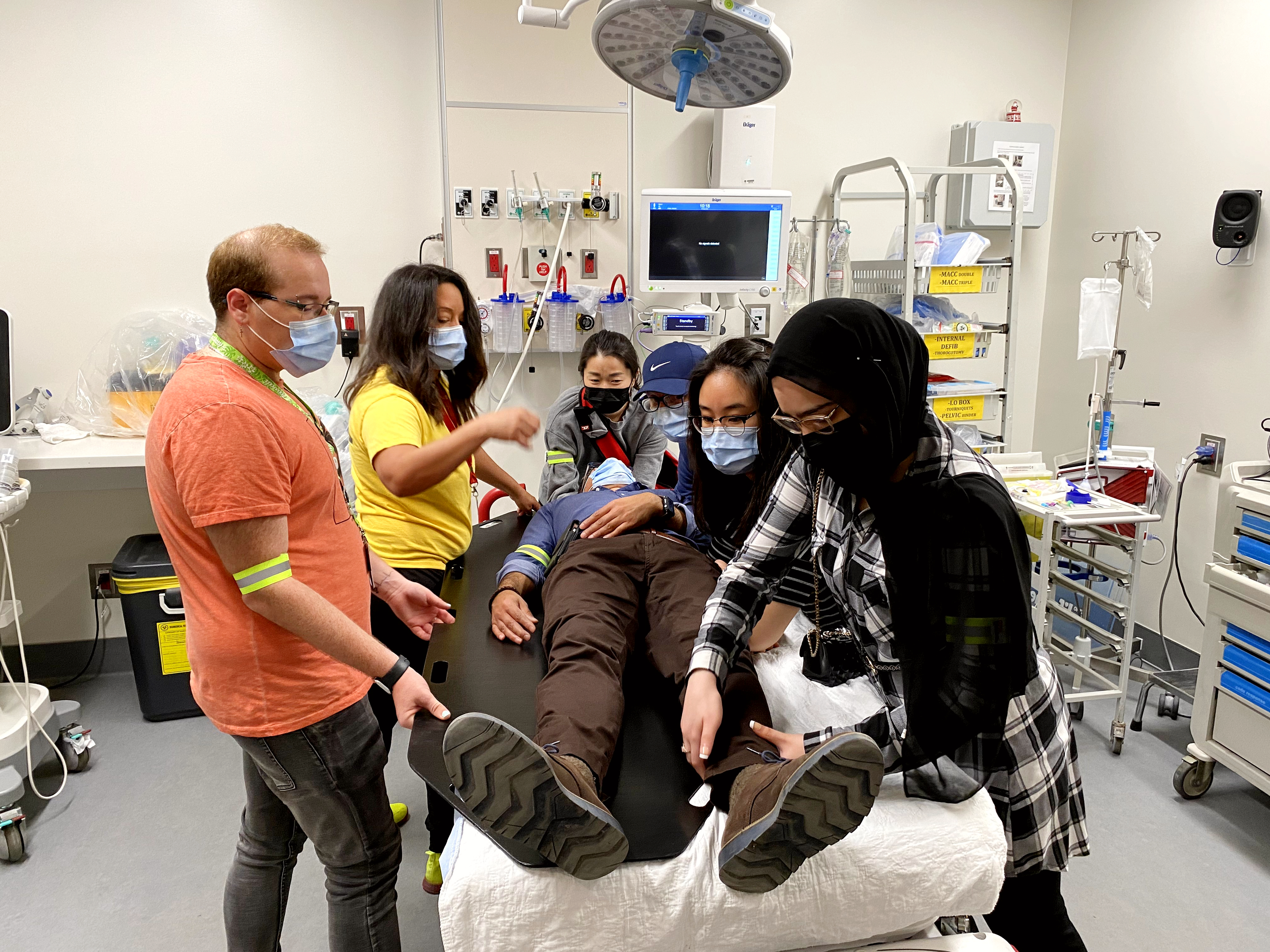
The group continued to the CT scan room and then to the Intensive Care Unit, where they observed medical personnel. A few staff members—including medical imaging technologists, a nurse, and a respiratory therapist—took the time to speak to the group.
The tour wrapped up with a testimony from Nicolas Steresco, survivor and injury prevention ambassador. Nicolas is a widely known advocate for trauma injury prevention in Montreal. Among his words of wisdom, he urged the group to be cautious in their day-to-day activities, to plan ahead, and to think twice before engaging in risky behaviour.
“Whether you incur an injury that is considered mild or severe, pain is pain. These are injuries that change lives. They affect your emotions. They affect your family. My message is not for people to avoid their activities and stop having fun—all I ask is that you make good choices. You can choose to slow down by 10 or 20 km on the highway. You can choose to wear your helmet. You can choose to think twice.”
A special thank you to the Trauma Program’s CODE TRAUMA team and the MGH Foundation, Tara Grenier as well as Alicia Sauro, administrative coordinator of the Trauma Department.
